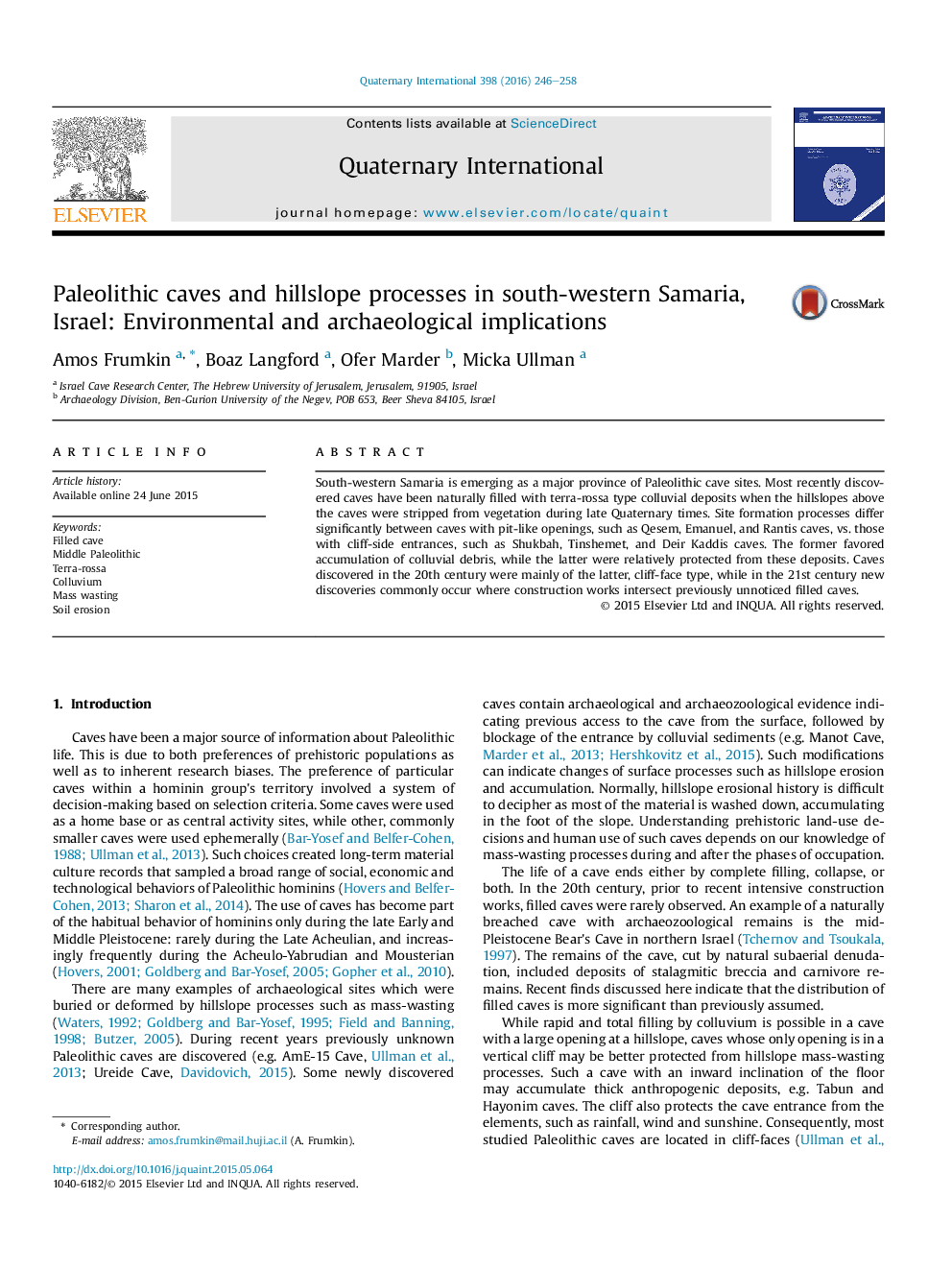| Article ID | Journal | Published Year | Pages | File Type |
|---|---|---|---|---|
| 1040298 | Quaternary International | 2016 | 13 Pages |
Abstract
South-western Samaria is emerging as a major province of Paleolithic cave sites. Most recently discovered caves have been naturally filled with terra-rossa type colluvial deposits when the hillslopes above the caves were stripped from vegetation during late Quaternary times. Site formation processes differ significantly between caves with pit-like openings, such as Qesem, Emanuel, and Rantis caves, vs. those with cliff-side entrances, such as Shukbah, Tinshemet, and Deir Kaddis caves. The former favored accumulation of colluvial debris, while the latter were relatively protected from these deposits. Caves discovered in the 20th century were mainly of the latter, cliff-face type, while in the 21st century new discoveries commonly occur where construction works intersect previously unnoticed filled caves.
Related Topics
Physical Sciences and Engineering
Earth and Planetary Sciences
Geology
Authors
Amos Frumkin, Boaz Langford, Ofer Marder, Micka Ullman,
